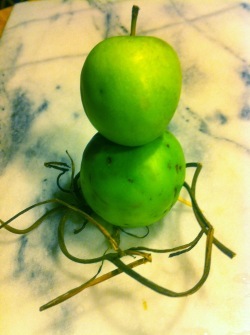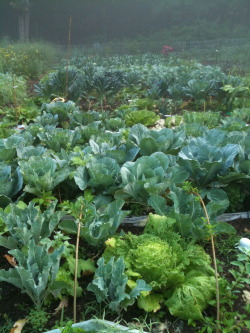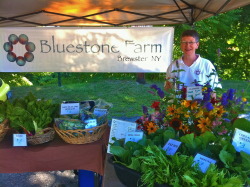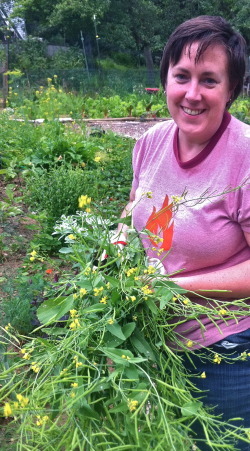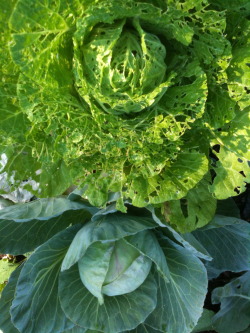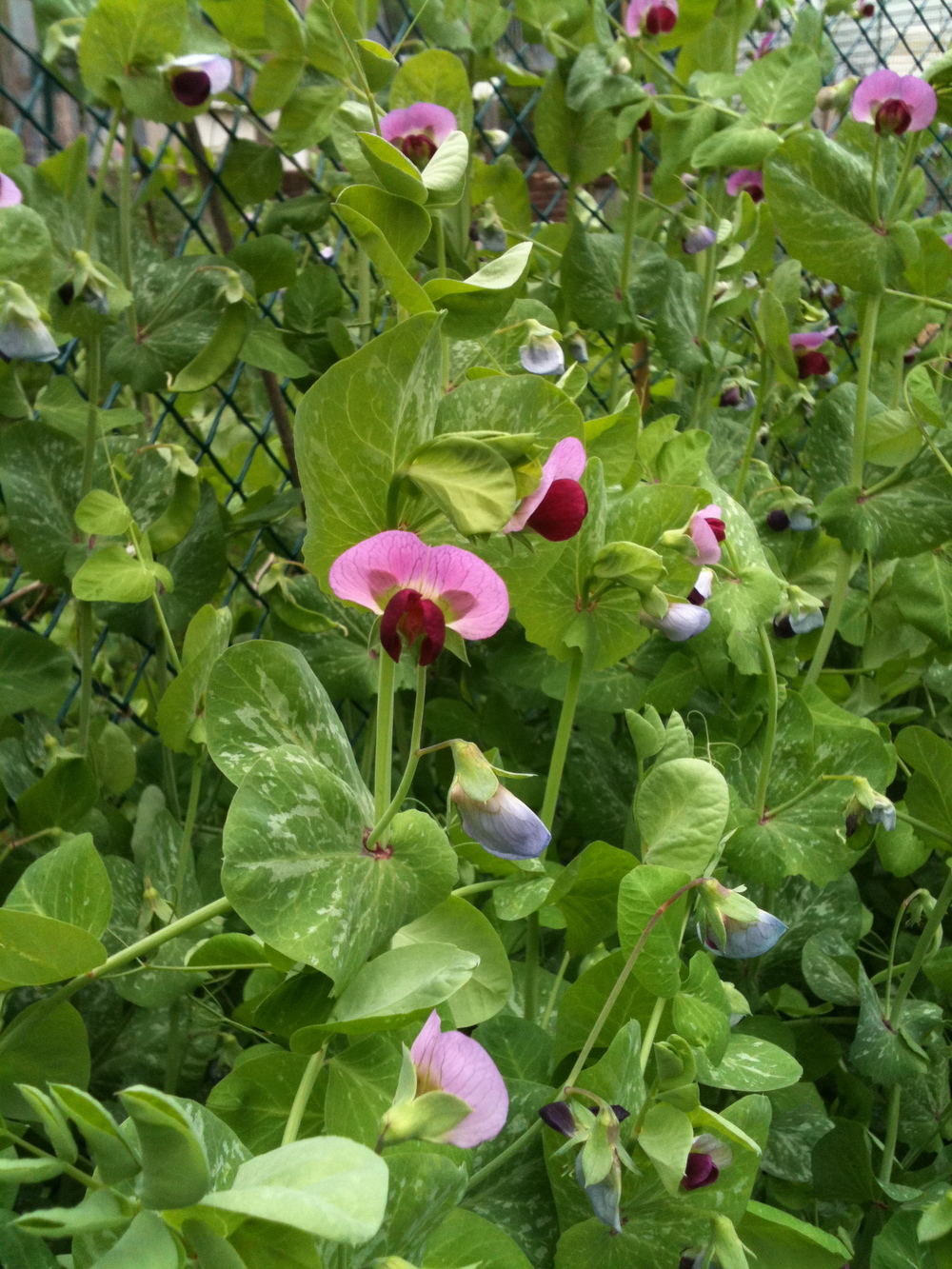
It's got more iron than spinach. Magnesium, B vitamins, folate, choline. More Omega-3 fatty acids than any other vegetable. More Vitamin C than cabbage. More Vitamin A than beets. More iron and calcium than frozen blueberries. (More on nutrition here.) It's used in many cuisines: French (called "pourpier"), Japanese ("grapara"), Indian ("sanhti" or "punarva") and Latin American ("verdolagas"), among others.
It grows easily, and requires no planting, as it's a self-seeding annual. Growing along the ground, it spreads quickly, and our garden is covered with it. Covered with it, no kidding. It flourishes in hot, dry weather, which we've had plenty of this year. But it doesn't seem to bother the other crops, in fact, it seems to be serving as a ground cover.
But it's commonly considered a weed. And if we still thought of it as such, we'd be in a bit of a bother. But once we started looking into it, and realized its tremendous health benefits and the variety of ways to prepare it, we came to see purslane in a new light.
And I'm so glad for that! Rather than ripping it out by the wheelbarrow-full, and dumping it in our weedpile, we can harvest it, eat it, preserve it, sell it. We've been harvesting it like crazy for our own use, using it in salads and stir-fry, making it into pesto and pickling it, and selling 15 bags of it a week at the farmers market, at one pound a bag.
If you've got a yard, it's quite possible there's some of this stuff growing. Take a look. One note of caution: there is a similar looking plant out there that's no good for you. So if you see what looks like purslane, cut a stem, and see what color the juice inside is. If it's clear, you're in the clear. If it's milky, then don't eat it: it's a plant called "spurge," and it's toxic.
Interested in trying purslane? Here's some easy ways to prepare it:
1) as a cold salad: chop it up, stems and all, and toss with olive oil and lemon juice.
2) as a cold salad: chop it up, stems and all, and toss with chopped cucumbers, and a yogurt-honey-pressed garlic-chili powder dressing.
3) saute it with onions and garlic, then add some beaten eggs and tomatoes, and scramble. (You can use purslane as you would spinach, in general.)
4) stir-fry it with some garlic, and toss with soy sauce and a dash of toasted sesame oil (hot chilies too, if you like)
5) use as you would basil, and make pesto (and then freeze for later use!)
6) add to soups, at the last minute, to thicken (has a slightly mucilaginous quality)
7) add to salads, mixed in with lettuces
8) pickle it!
Sometimes all it takes is a shift in perspective. Weed or superfood? It's up to you.
And what else would benefit from being considered in a different light? One of the Sisters here just completed a three-month sabbatical, staying in a little hermitage on the property here. In the first week of her sabbatical, she had set up her laptop, facing a big open window onto the woods, and was planning on doing email and other tasks on the computer. But the internet connection was slow, and frustrating, and while she sat and sat, waiting for pages to load, she gazed out the window. And began to watch the birds and other wildlife, becoming entranced. Her frustration and thwarted connectivity turned into a new passion, as she began learning all about the birds in our little ecosystem, listening to their calls, studying their habits. What a gift emerged from the failed wireless signal!
This is my meditation for the week: what can emerge, if I'm willing to shift my perspective?

